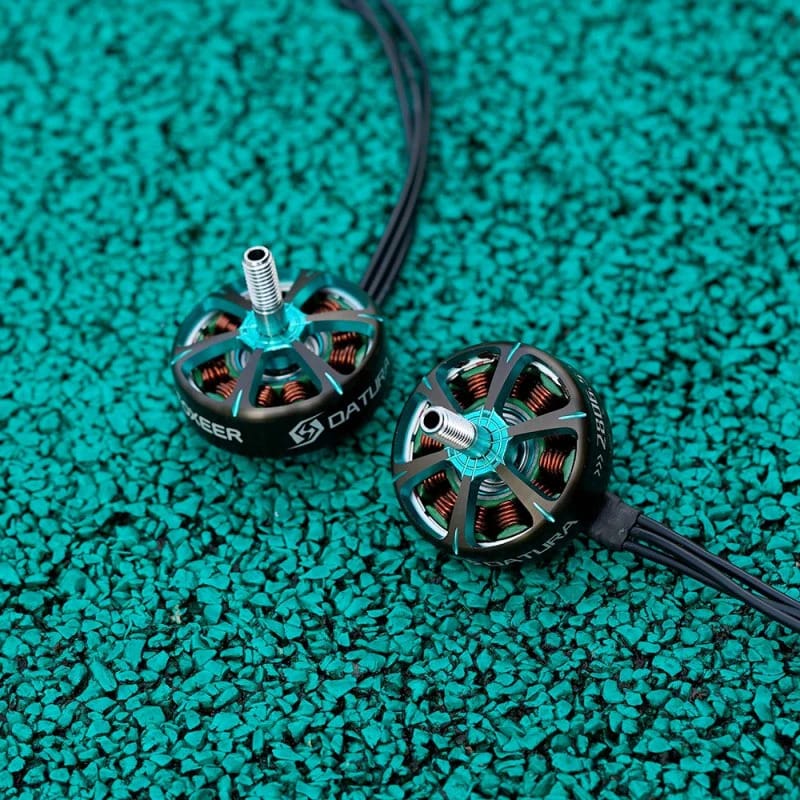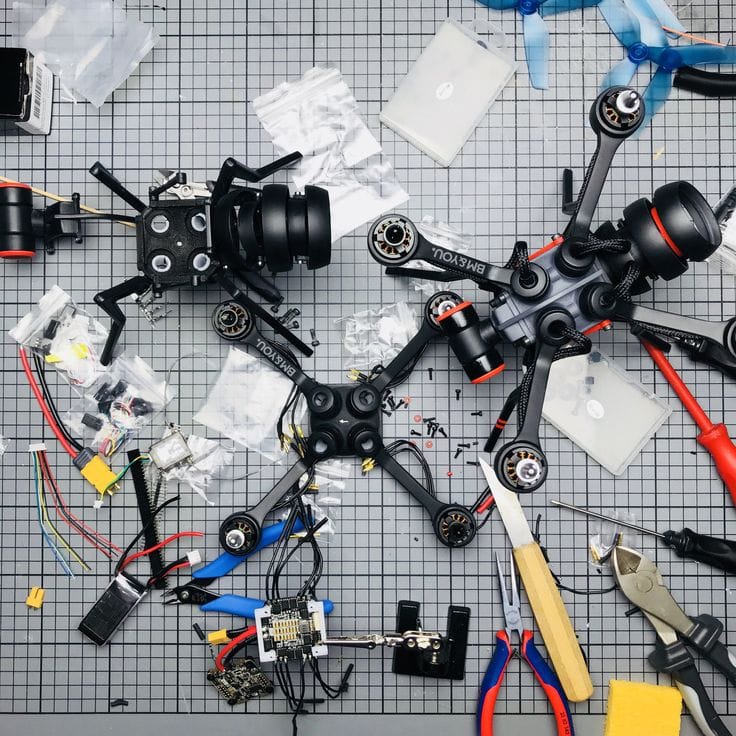When choosing FPV drone motors, consider the size and purpose of your drone. Different drone categories require specific motors for optimal performance. Key factors include KV rating, motor size, stator size, torque, mounting pattern, weight, pole count, and winding direction.

When it comes to selecting motors for your FPV (First Person View) drone, the size and purpose of your drone are crucial factors. Different drone categories, ranging from tiny Whoop frames to large professional rigs, require motors with specific characteristics to ensure optimal performance. In this guide, we’ll break down the requirements for each drone size category, including motor KV, size, stator size, torque, motor mounting, weight, pole count, and winding direction.
Whoop Frames (2.5 to 3 inches)
Whoop frames are characterized by their small size and agile flight capabilities, making them ideal for indoor flying. Here’s what you need to know when choosing motors for these tiny drones:
- KV Range: Opt for motors with KV ratings ranging from 15000 to 25000. High KV motors ensure nimble maneuverability within confined spaces.
- Motor Size: Motors like 0802 or 1103 are suitable for Whoop frames.
- Stator Size: Typically, these motors have stators around 8mm in diameter and 2mm in height (e.g., 0802).
- Torque: Whoop motors provide enough torque for quick maneuvers. For example, the 0802 motor might have a torque rating of around 0.02 Nm.
- Motor Mounting: Motors like the 0802 and 1103 are often mounted using a 6.5mm x 6.5mm hole pattern.
- Weight: These motors are very lightweight, typically around 2g to 3g.
- Pole Count: Commonly, Whoop motors have a 12-pole design (6 pairs of poles).
- Motor Windings: Brushless motors for Whoop frames are not labeled as clockwise (CW) or counterclockwise (CCW) since their rotation direction can be changed in the flight controller settings.
Micro Frames (4 to 7 inches)
Micro frames strike a balance between agility and power, making them versatile for both indoor and outdoor flight. Here’s what to consider:
- KV Range: Motors with KV ratings ranging from 4000 to 6500 are suitable for micro frames.
- Motor Size: Choose motors sized between 1404 to 1606 to meet the demands of micro-sized drones.
- Stator Size: A typical stator size for micro motors could be 14mm in diameter and 4mm in height (e.g., 1404).
- Torque: Micro motors offer more torque compared to Whoop motors, such as 0.05 Nm for a 1404 motor.
- Motor Mounting: Motors like 1404 and 1606 typically use a 9mm x 9mm mounting pattern.
- Weight: These motors generally weigh between 8g to 15g.
- Pole Count: Micro motors often feature 14-pole designs (7 pairs of poles).
- Motor Windings: Micro motors follow the same CW and CCW labeling convention for consistent propeller tightening.
FPV Drone Build Under 300$ With Goggles & Controller
Learn how to build a custom FPV drone for under $300, complete with goggles and a controller. Our guide provides step-by-step instructions and carefully curated component selections. Start your FPV journey today!

Mini Frames (7 to 10 inches)
Mini frames are popular in FPV racing and require motors that deliver both speed and torque for optimal performance. Consider the following:
- KV Range: Opt for motors with KV ratings from 2400 to 2750 for mini frames.
- Motor Size: Motors sized between 2205 to 2306 are ideal for FPV racing drones.
- Stator Size: Common stator sizes include 22mm in diameter and 5mm to 6mm in height (e.g., 2205 or 2306).
- Torque: These motors provide substantial torque, such as 0.15 Nm for a 2205 motor.
- Motor Mounting: Mini motors typically use a 16mm x 19mm mounting pattern.
- Weight: These motors generally weigh between 25g to 35g.
- Pole Count: A typical pole count for mini motors is 14-pole (7 pairs of poles).
- Motor Windings: These motors are labeled CW and CCW to ensure proper propeller tightening, crucial for racing drones where propeller loss can result in race-ending crashes.
Standard Frames (10 to 18 inches)
Standard frames are designed for recreational and cinematic flying, requiring motors capable of handling heavier payloads with stability and efficiency. Here’s what you need:
- KV Range: Motors with lower KV ratings between 800 to 1600 are suitable for standard frames.
- Motor Size: Opt for larger motors ranging from 2806 to 3210 to support the weight of heavier payloads.
- Stator Size: Stator sizes for these motors might be around 28mm in diameter and 6mm to 10mm in height (e.g., 2806 or 3210).
- Torque: Standard motors offer even more torque, for example, 0.5 Nm for a 2806 motor.
- Motor Mounting: These motors use a 19mm x 19mm mounting pattern.
- Weight: These motors generally weigh between 50g to 80g.
- Pole Count: Often, these motors have a 14-pole design.
- Motor Windings: Follow the CW and CCW labeling for consistency in propeller tightening, important for maintaining stability with heavier payloads.
Large Frames (over 18 inches)
Large frames are reserved for professional cinematography or industrial applications, requiring motors that can provide substantial lift with maximum efficiency and stability. Here are the specifics:
- KV Range: Motors with very low KV ratings below 800 are suitable for large frames.
- Motor Size: Consider motor sizes like 4210 or larger to support the weight of heavy payloads.
- Stator Size: Large motors may have stators like 42mm in diameter and 10mm or more in height (e.g., 4210).
- Torque: These motors provide significant torque, such as 2 Nm for a 4210 motor.
- Motor Mounting: Large motors are mounted with heavy-duty screws and typically use a 30mm x 30mm mounting pattern.
- Weight: These motors generally weigh over 150g.
- Pole Count: Higher pole counts, such as 24-pole designs (12 pairs of poles), are common for smoother performance.
- Motor Windings: These also follow the CW and CCW labeling convention, ensuring proper propeller tightening for extended flight durations.
Conclusion
Selecting the right motors for your FPV drone involves considering various factors such as size, KV rating, stator size, torque, motor mounting, weight, pole count, and winding direction. By understanding the specific requirements of each drone size category and matching them with appropriate motors, you can ensure optimal performance and an exhilarating flying experience tailored to your needs. Whether you’re flying indoors with a nimble Whoop drone or capturing cinematic shots with a large professional rig, choosing the right motors is essential for achieving your desired results. Use these examples and numbers as a guide to make informed decisions for your FPV drone motor selection.














